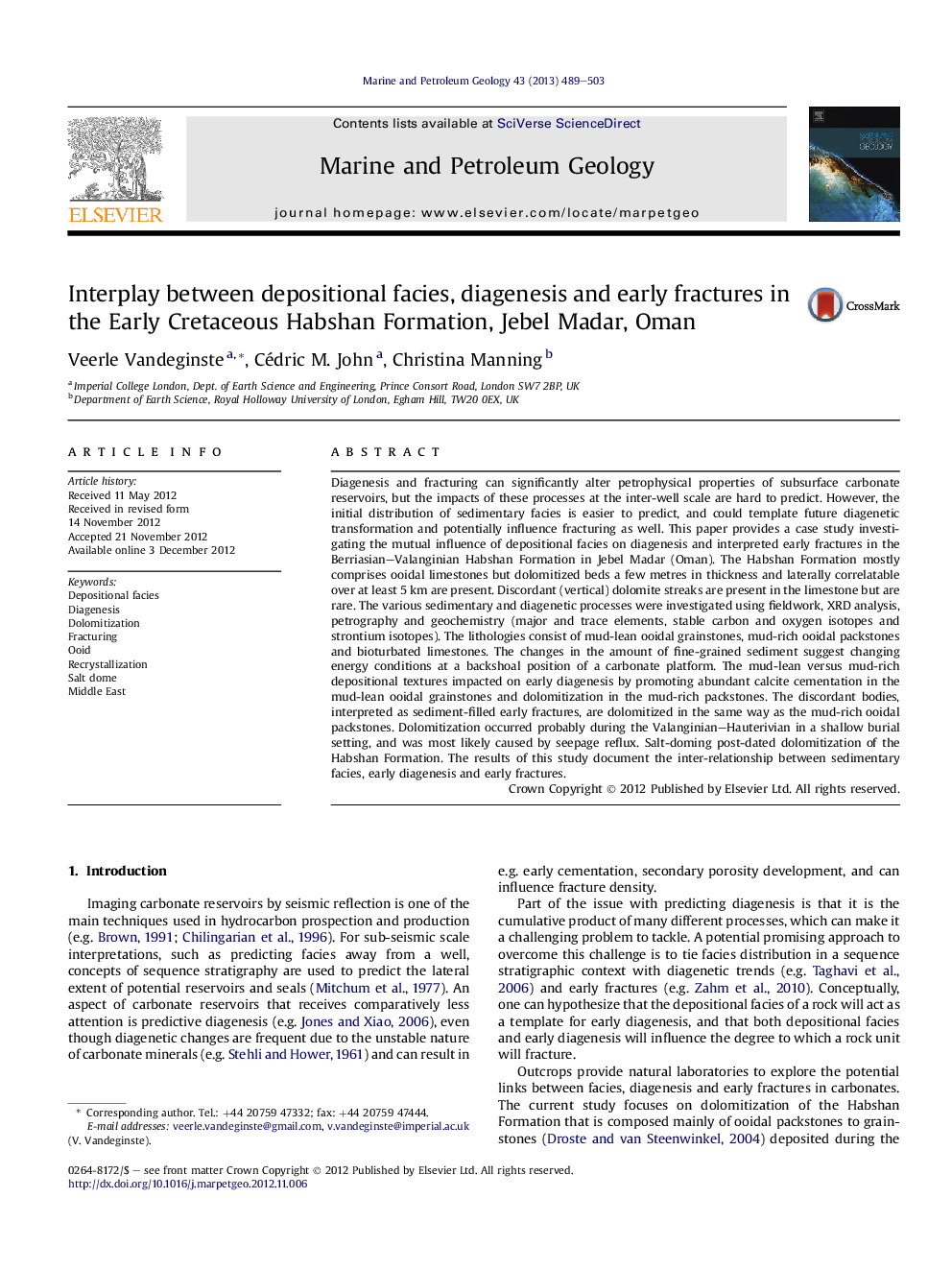| Article ID | Journal | Published Year | Pages | File Type |
|---|---|---|---|---|
| 6435571 | Marine and Petroleum Geology | 2013 | 15 Pages |
Diagenesis and fracturing can significantly alter petrophysical properties of subsurface carbonate reservoirs, but the impacts of these processes at the inter-well scale are hard to predict. However, the initial distribution of sedimentary facies is easier to predict, and could template future diagenetic transformation and potentially influence fracturing as well. This paper provides a case study investigating the mutual influence of depositional facies on diagenesis and interpreted early fractures in the Berriasian-Valanginian Habshan Formation in Jebel Madar (Oman). The Habshan Formation mostly comprises ooidal limestones but dolomitized beds a few metres in thickness and laterally correlatable over at least 5Â km are present. Discordant (vertical) dolomite streaks are present in the limestone but are rare. The various sedimentary and diagenetic processes were investigated using fieldwork, XRD analysis, petrography and geochemistry (major and trace elements, stable carbon and oxygen isotopes and strontium isotopes). The lithologies consist of mud-lean ooidal grainstones, mud-rich ooidal packstones and bioturbated limestones. The changes in the amount of fine-grained sediment suggest changing energy conditions at a backshoal position of a carbonate platform. The mud-lean versus mud-rich depositional textures impacted on early diagenesis by promoting abundant calcite cementation in the mud-lean ooidal grainstones and dolomitization in the mud-rich packstones. The discordant bodies, interpreted as sediment-filled early fractures, are dolomitized in the same way as the mud-rich ooidal packstones. Dolomitization occurred probably during the Valanginian-Hauterivian in a shallow burial setting, and was most likely caused by seepage reflux. Salt-doming post-dated dolomitization of the Habshan Formation. The results of this study document the inter-relationship between sedimentary facies, early diagenesis and early fractures.
⺠The study highlights how depositional facies templated subsequent dolomitization. ⺠Interpreted early fractures were exploited by dolomitizing fluids. ⺠Dolomitization preceded halokinesis and is not related to salt doming. ⺠Dolomitization probably occurred by seepage reflux. ⺠The study supports causal links between facies, diagenesis and fractures.
